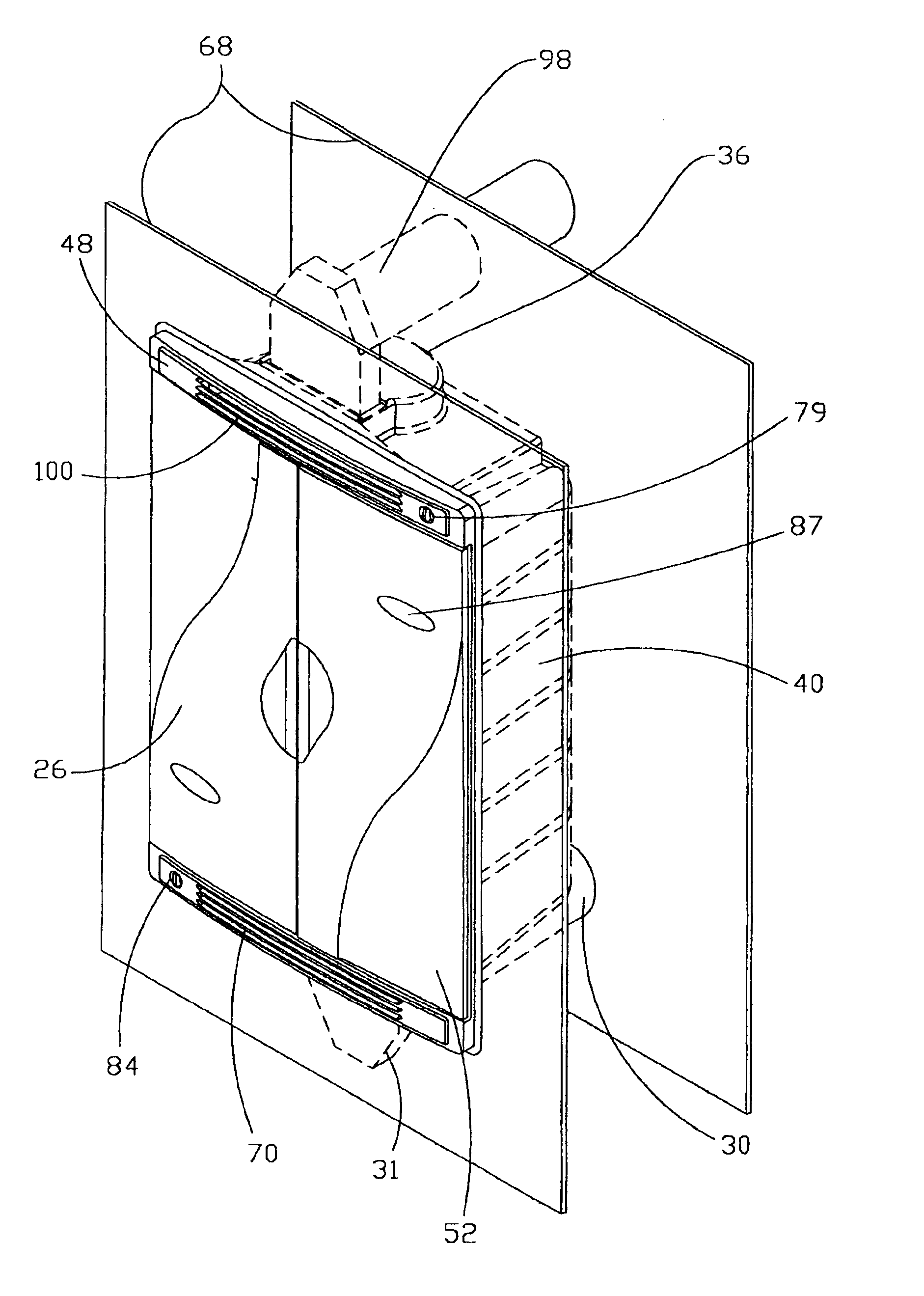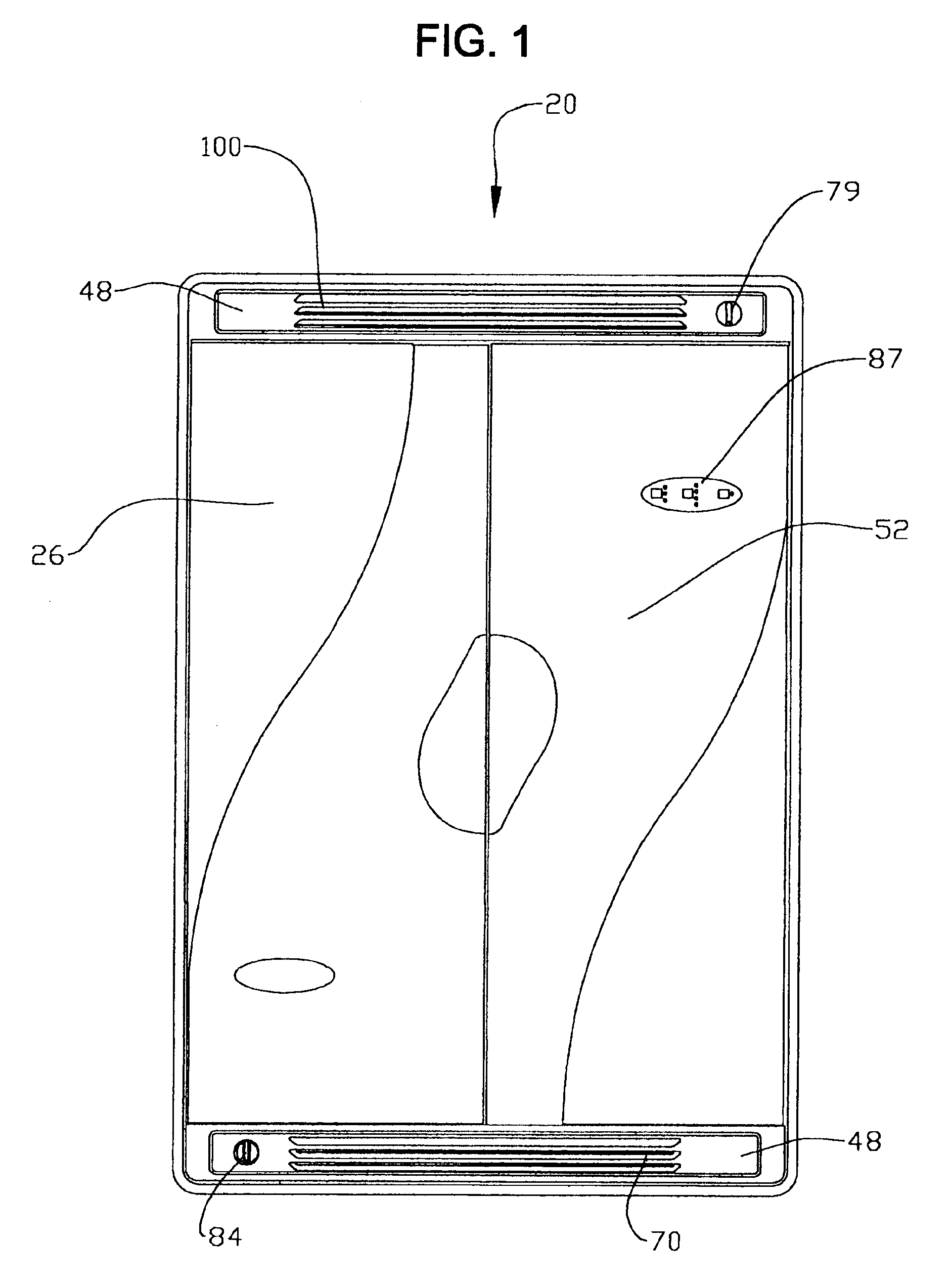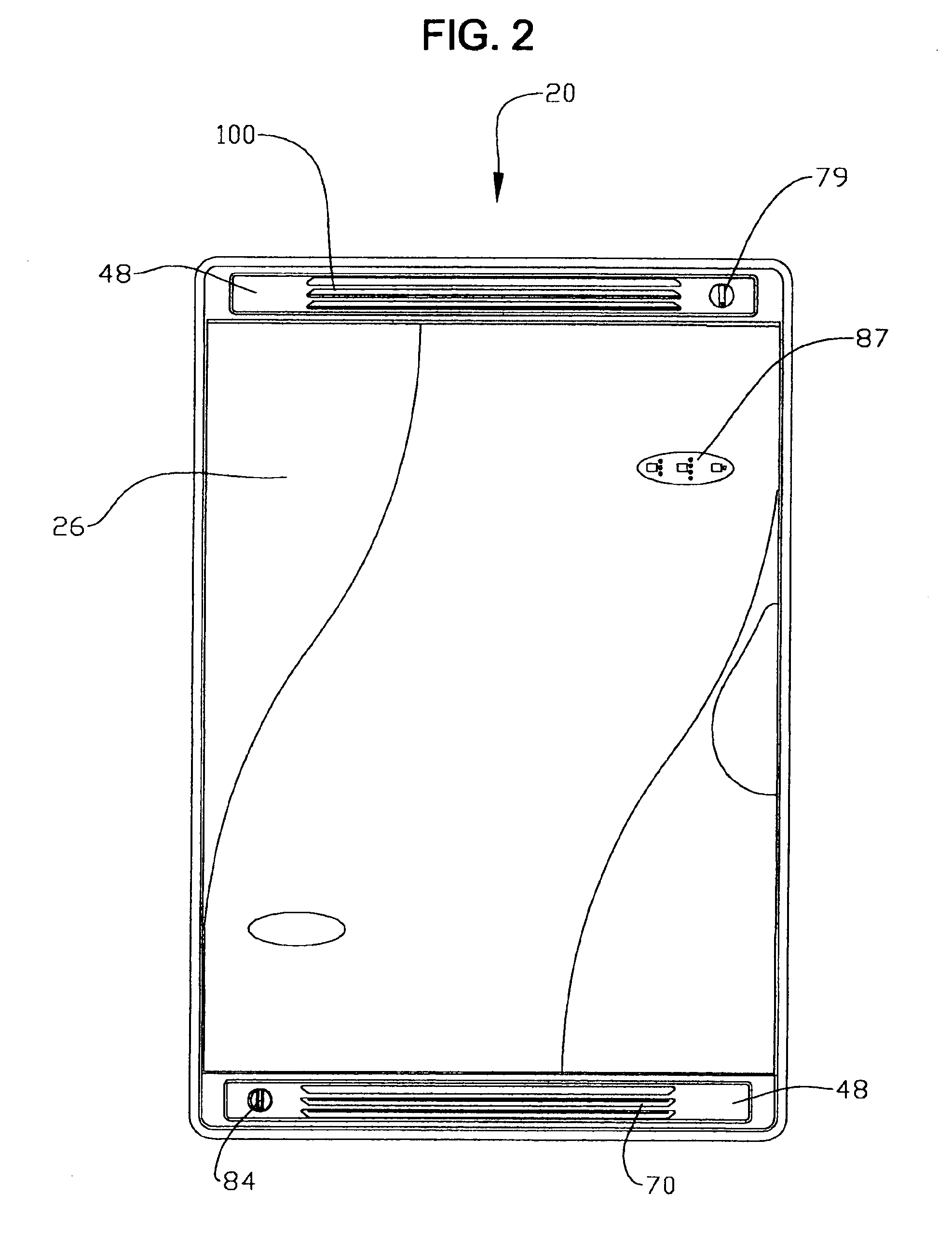This rotation and heat is known to cause damage and shrinkage to clothing dried within the conventional dryer.
In particular, a risk of over-drying exists in current dryers, and particularly in those dryers that do not have sensors or other means of detecting dry clothing.
Over-drying is caused by excessive or prolonged heat that is applied to clothing and, as a result, over-heats, stresses, damages, and shrinks the clothing fabrics.
Therefore, the efficiency of such dryers is relatively low, often taking an hour or more to dry a load of
laundry even with the addition of heat, expending a significant amount of energy.
Moreover, the efficiency of comparable models of conventional tumble clothes dryers is generally the same, with the exception that
natural gas dryers are often less expensive than electric dryers to operate, primarily due to the cost of
natural gas versus
electricity.
However, as both gas and
electricity are used for heating a dryer, both expel more energy than would otherwise be required by a device that operates simply a fan or blower to circulate
ambient air.
However, these controls are still prone to problems.
Devices with timers and temperature sensors are likely to over-dry clothes because they cannot detect remaining
moisture in the clothing.
Moisture sensors are less likely to over-dry clothing, but conventional tumble dryers using such sensors do not avoid tumbling action which repeatedly jars and stretches clothing fabrics, and therefore still causes damage to fabrics.
Unfortunately, as described hereinabove, tumble drying still damages clothing fabrics.
Furthermore, most of these methods use heat, which could result in over-drying clothes.
Therefore, the combination of heat and movement of clothes in conventional methods is believed to shorten drying times. However, aside from the problems of adding heated air which damages fabrics and overall low efficiency of such systems, tumble drying flexes cloth fibers, resulting in damage to the fabric.
Accordingly, as discussed herein, various problems exist for conventional dryers, such as over-drying clothes.
Furthermore, drying partial loads of
laundry wastes energy because the dryer is not being used in its full capacity.
The tumbling of clothes constantly flexes and stretches clothing fabrics, damaging the fabrics.
When such items are introduced into a drying cycle of a conventional dryer they damage the drum,
scratching and denting the inner surface of the drum as they are tumbled through a drying cycle.
Eventually, enough damage is caused to the drum from dents and scratches that the drum, in turn, damages clothing placed in the dryer, such as by
snagging or tearing fabric threads.
Clothes drying cabinets are typically used to dry clothing that is not suitable for a conventional tumble dryer, such as more delicate items.
To completely dry clothes by
evaporation takes a significant amount of time.
Many of these clothes drying cabinets are, therefore, equally susceptible to over-drying and damaging clothes inside the cabinet.
Likewise, these cabinets do not improve upon the efficiency of conventional dryers.
By using heated, and even recycled air, the air is often stale and does not “freshen” the clothes dried within the cabinet.
However, a cabinet that depends on the natural
evaporation of water requires lengthy drying times, particularly when cabinet
doors are closed.
As a result, less air will be available to dry clothes.
Furthermore, the temperature and
humidity on a given day will significantly affect the
drying time of clothing dried within the cabinet.
This leads to a significant increase in the amount of time necessary to dry clothing on a humid day because the air passing over the clothing is picking up less water.
Thus, current clothes drying cabinets that depend upon the
free flow of air are extremely inefficient.
Specifically,
ambient air is drawn into the device, heated by a gas or electric heater, and subsequently blown into the cabinet, forcing the hot air across the surface of the wet clothing to cause
evaporation.
The introduction of heated air, however, risks over-drying and damaging the clothes within the cabinet, and expends a significant amount of energy to heat the clothes.
Further, while current tumble dryers provide an “air fluff” cycle, these tumble dryers do not draw air from the exterior of the building.
As a result, the air often used to dry clothes is stale, and may lead to unpleasant odors in the clothes.
The use of heat and
humidity to de-
wrinkle and refreshen clothing hung within the cabinet, likewise, does not provide clothesline freshness to the clothing, as the heat and
humidity traps these stale odors within the clothing.
In addition to the danger of over-drying clothing, a cabinet that additionally applies
moisture increases drying times. The addition of pressure and tension stretches, potentially
tears, and certainly damages the fabric of clothes placed within the cabinet.
However, as is the case with conventional dryers, these controls are still likely to damage clothing through over-drying and other problems, and are also inefficient.
 Login to View More
Login to View More  Login to View More
Login to View More 


